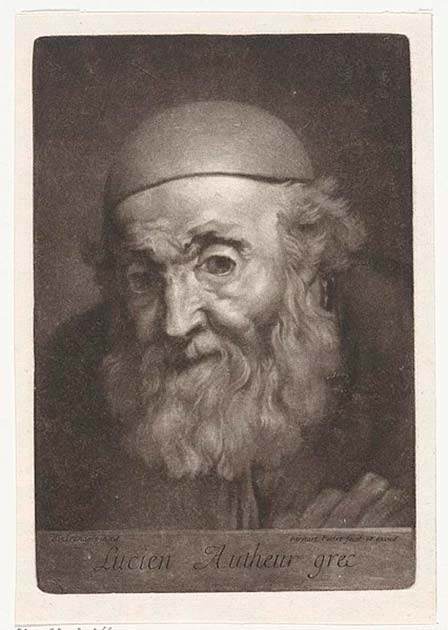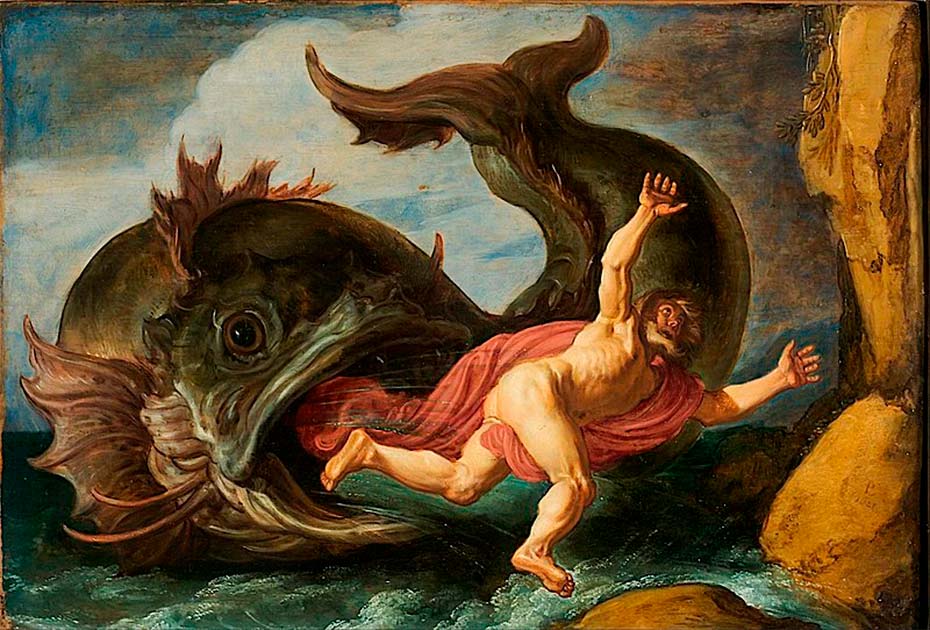Lucian’s “True Story”, also known as a “True History” is considered to be one of the first science fiction stories ever created. It was written by Lucian of Samosata in the second century AD and details a voyage through the known lands to the edges of reason and space.
The title has been seen as a sarcastic one that indicates the story is wholly unbelievable. Lucian’s fantasy goes from outer space and the civilizations that live there, to the interior of a giant whale.
However, not every character is made up. The reader will get to meet Pythagoras, Socrates, and Homer as well as figures of legend such as Odysseus.
As a textual work, it is filled with puns, parody, innuendo, and satire but most of this can be missed by a modern reader. It was solely written for a Greek audience of the second century.
The book ends promising more works to follow but these were either lost or never written. Whilst this may seem an unbelievable story, it is true that this book perhaps represents the first iteration of science fiction.
Lucian of Samosata
There is little known about Lucian. Most of the information available today comes from his own works but he chose not to write about himself all that often. It is thought that he was from Samosata in Syria and was born around 120 AD. It is likely that he died around 180 AD in Athens.
He was most famous as a rhetorician, satirist, and pamphleteer. To make matters even more difficult, the chronology of his work is difficult to work out and the major events of his life can only be pieced together broadly.

As a boy, Lucian showed some talent for sculpting and was apprenticed to his uncle who was impressed by his clay models. Unfortunately, the two of them quarreled and Lucian is said to have set off for Western Asia Minor where he was to acquire an education following Greek precedents.
It was after this that he began his life as a public speaker. Lucian traveled from city to city giving lectures and pleading in courts.
From touring Greece and Italy, Lucian made his way to Gaul to do the same. Despite his wide travels and clear skill in oratory, Lucian never made it to the heights of a first-rank rhetorician.
In the late 150s, Lucian settled in Athens and gave more time to Greek Literature. He gave up public speaking and began to produce satirical and critical essays on the intellectual life of his time. He did this by either imitating Menippus, an author who mixed prose and verse, or in the form of Platonic dialogues.
Lucian was quite successful in this and it continued to develop the reputation he had gained as a public speaker. Lucian produced around 80 works that have been attributed to him. Many of them stand out for their wit and critique of literature and philosophy.
He satirized every aspect of human life. His most popular topic was the transience of greatness and wealth. All of which was exemplified in his “True Story”.
A True Story
This piece of work is classed as a long novella or a short novel. It is filled with satire and outlandish stories that had been reported in ancient historical sources. This is probably Lucian’s best-known work.
At the moment it is the earliest known work to speak of space travel, extra-terrestrial life forms, and warfare in space. However, it should be noted that this work does not fit into the literary genres of today. It has a multi-layered plot and varied characters, and academics struggle to find a consensus on how to define it.
The story begins with an explanation that the tale is completely made up. Lucian himself features in the tale and begins his journey by traveling with his companions past the Pillars of Heracles in the western Mediterranean, before being blown off course by a storm.
The first island they visit features a river of wine indicating that Dionysus had traveled to this point. They leave this island but are swept up in a tornado and taken to the Moon.
Unfortunately for the party, they are caught in the middle of a space war between the King of the Moon and the King of the Sun over the colonization of the Morning Star. Luckily a peace treaty is signed soon after and Lucian can describe how moon life is different from the Earth.

Unsurprisingly, events do not get less strange after this as Lucian returns to Earth only to be swallowed by a giant whale. Inside they meet a vicious fish people who they battle, eventually emerging victorious.
Upon victory, they start a fire that causes the whale to vomit them onto an island made of cheese surrounded by a sea of milk: one can only imagine the smell. Hurriedly leaving, they next come across the Island of the Blessed.
On this Island, Lucian meets characters from the Trojan War and the likes of Homer and Pythagoras. He sees sinners being punished and importantly those who are punished the most are writers of history like Herodotus.
Finally, they sail away avoiding a huge chasm in the ocean where the story ends abruptly. The final sections promise more is to come, but no such works have ever appeared.
In one view, scholars have thought that Lucian intended his work to be a literary satire on ancient sources that claimed mythical events as truth. He mentions Homer, Iambulus and Ctesias. Many of the characters in the story are exaggerated and mock the original iterations of them.
It seems like Lucian hoped to be a parody of all those literary classicists like Herodotus who claimed to be truthful but were actually liars. Lucian states within the story that all of the things he describes are events that he has not gone through, or that he has heard from anybody else.
It is because of this, that this story is the only truthful mythological story to have ever been written all because it admits that it is lie. His promise of a sequel is perhaps the greatest lie in the whole thing.
Top Image: Lucian’s True Story was intended as a mocking satire of historians who fictionlize their accounts, but his narrative pre-empts much of modern sci-fi. Source: Gasi / Adobe Stock.
By Kurt Readman